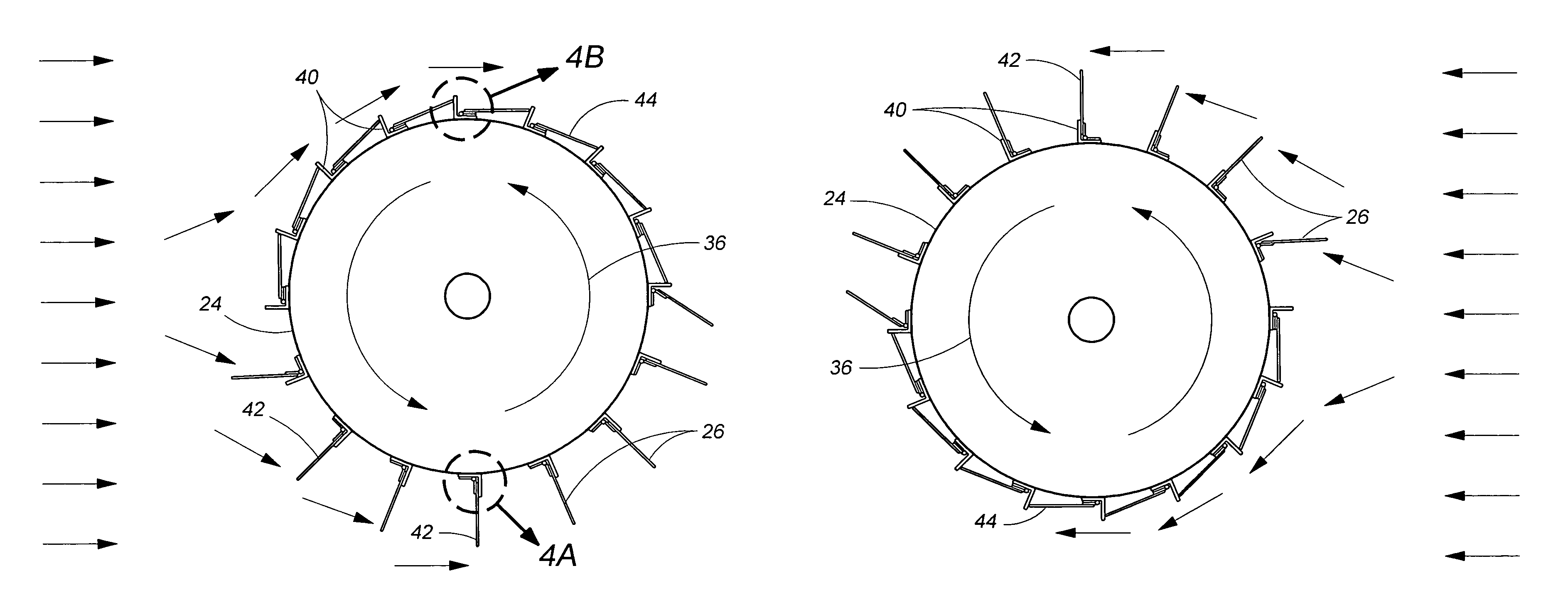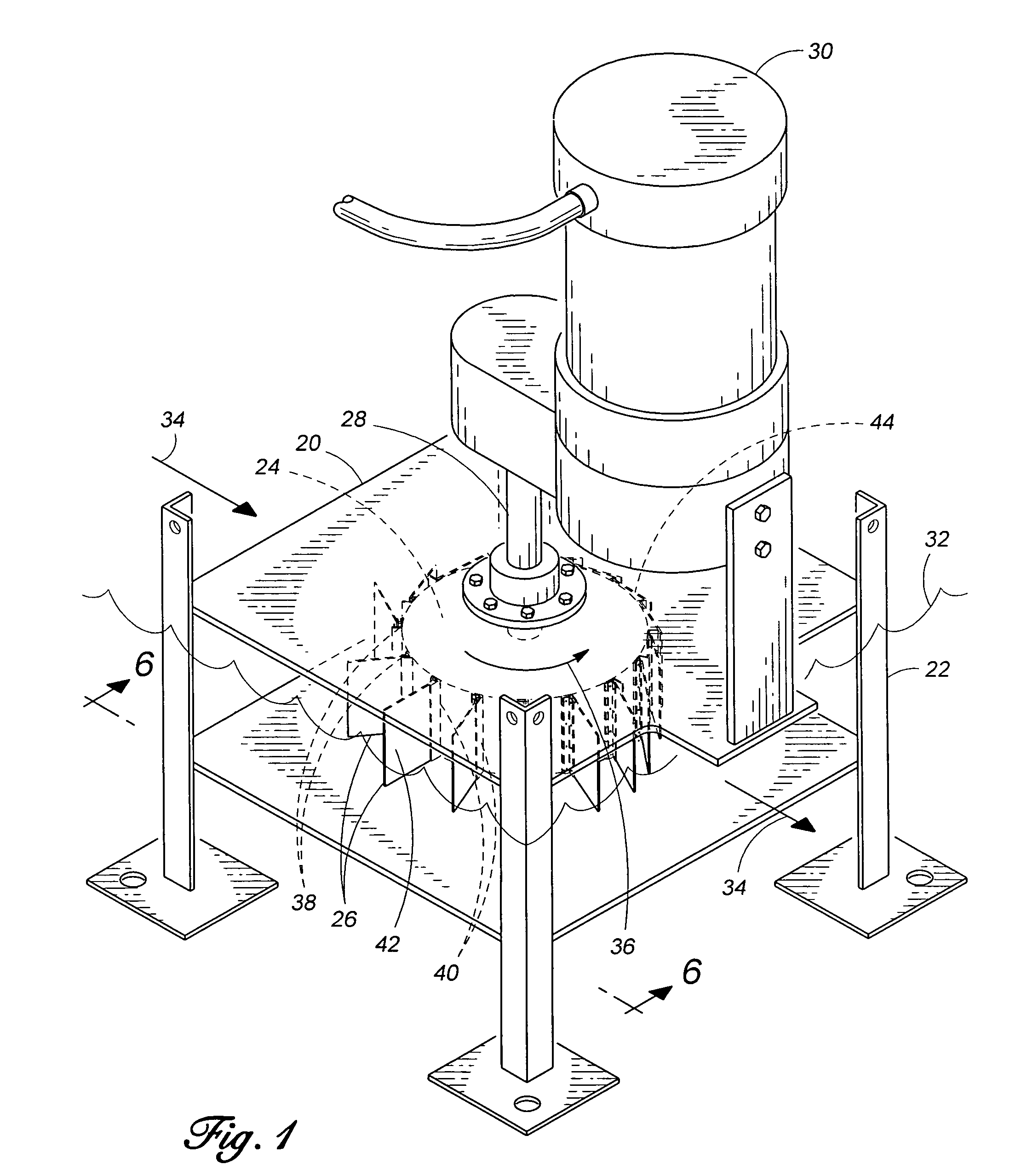Hinged blade device to convert the natural flow or ocean or river current or ocean waves to rotational mechanical motion for power generation
a technology of rotating blades and blades, which is applied in the direction of electric generator control, renewable energy generation, greenhouse gas reduction, etc., can solve problems such as not meeting limitations, and achieve the effect of maximizing power generation
- Summary
- Abstract
- Description
- Claims
- Application Information
AI Technical Summary
Benefits of technology
Problems solved by technology
Method used
Image
Examples
Embodiment Construction
[0041]FIG. 1 illustrates the preferred embodiment of the invention. The portable power producing device 20 comprises a support structure 22, central hub 24, a plurality of blades 26, a power take off assembly 28 connected to central hub 24, further connected to an electrical generator 30. Each blade 26 is connected to central hub 24 by hinge 38. Central hub 24 is submerged in water of about level 32. The water is moving in direction 34 which causes the central hub 24 to rotate in counterclockwise direction depicted by arrow 36.
[0042]Continuing to refer to FIG. 1, the motion of the water against blades 26 causes them to rotate about the hinges 38. Every blade 26 is free to rotate about its hinge 38 within 90 degrees which is inside the limits of the blade limiter 40. Each blade 26 opens to the appropriate extent within the limits imposed by blade limiter 40 depending on the motive fluid direction and the position of the central hub 24. When a blade 26 is in its fully extended positio...
PUM
 Login to View More
Login to View More Abstract
Description
Claims
Application Information
 Login to View More
Login to View More - R&D
- Intellectual Property
- Life Sciences
- Materials
- Tech Scout
- Unparalleled Data Quality
- Higher Quality Content
- 60% Fewer Hallucinations
Browse by: Latest US Patents, China's latest patents, Technical Efficacy Thesaurus, Application Domain, Technology Topic, Popular Technical Reports.
© 2025 PatSnap. All rights reserved.Legal|Privacy policy|Modern Slavery Act Transparency Statement|Sitemap|About US| Contact US: help@patsnap.com



